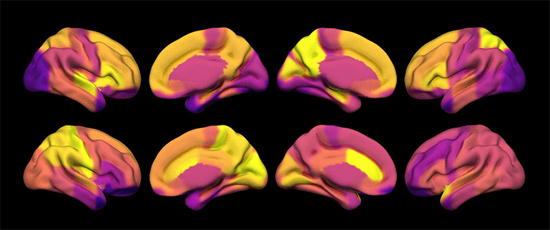Microglial activation states drive glucose uptake and FDG-PET alterations in neurodegenerative diseases
Sci Transl Med. 2021 Oct 13;13(615):eabe5640.
| Authors/Editors: |
Xianyuan Xiang Karin Wind Thomas Wiedemann Tanja Blume Yuan Shi Nils Briel Leonie Beyer Gloria Biechele Florian Eckenweber Artem Zatcepin Sven Lammich Sara Ribicic Sabina Tahirovic Michael Willem Maximilian Deussing Carla Palleis Boris-Stephan Rauchmann Franz-Josef Gildehaus Simon Lindner Nicolai Franzmeier Karlheinz Baumann Axel Rominger Peter Bartenstein Sibylle Ziegler Alexander Drzezga Gesine Respondek Katharina Buerger Robert Perneczky Johannes Levin Günter U Höglinger Jochen Herms Christian Haass Matthias Brendel |
|---|---|
| Publication Date: | 2021 |
| Type of Publication: | Journal Article |
Influential microglia
Neurodegenerative diseases are associated with alterations in brain energy metabolism. Recent developments in imaging techniques allow to visualize glucose metabolism alterations using 2-deoxy-2-[18F]fluoro-d-glucose positron emission tomography (FDG-PET). Here, Xiang et al. investigated the role of microglia in determining FDG-PET signal. The authors found that glucose uptake is greater in microglia compared to astrocytes and neurons and that microglia state determined the alterations in FDG-PET signal seen in mouse models of neurodegenerative diseases. In patients, microglia activity correlated with FDG-PET, suggesting the translational value of the preclinical data. The results suggest that microglia activity should be taken into consideration when performing brain FDG-PET.

Abstract
2-Deoxy-2-[18F]fluoro-d-glucose positron emission tomography (FDG-PET) is widely used to study cerebral glucose metabolism. Here, we investigated whether the FDG-PET signal is directly influenced by microglial glucose uptake in mouse models and patients with neurodegenerative diseases. Using a recently developed approach for cell sorting after FDG injection, we found that, at cellular resolution, microglia displayed higher glucose uptake than neurons and astrocytes. Alterations in microglial glucose uptake were responsible for both the FDG-PET signal decrease in Trem2-deficient mice and the FDG-PET signal increase in mouse models for amyloidosis. Thus, opposite microglial activation states determine the differential FDG uptake. Consistently, 12 patients with Alzheimer’s disease and 21 patients with four-repeat tauopathies also exhibited a positive association between glucose uptake and microglial activity as determined by 18F-GE-180 18-kDa translocator protein PET (TSPO-PET) in preserved brain regions, indicating that the cerebral glucose uptake in humans is also strongly influenced by microglial activity. Our findings suggest that microglia activation states are responsible for FDG-PET signal alterations in patients with neurodegenerative diseases and mouse models for amyloidosis. Microglial activation states should therefore be considered when performing FDG-PET.
Please click on the following link for access to full text: Research Article
Related Links
- Science Translational Medicine: DOI 10.1126/scitranslmed.abe5640
- Immunzellen des Gehirns mit „Heißhunger“ auf Zucker (LMU Pressemeldung)
- Immunzellen des Gehirns haben bei neurodegenerativen Erkrankungen „Heißhunger“ auf Zucker (DZNE Pressemeldung)
- Brain immune cells have a "ravenous appetite" for sugar (LMU press release)
- In Neurodegenerative Diseases, Brain Immune Cells Have a “Ravenous Appetite” for Sugar (DZNE press release)
- Alzforum: Spotlight



